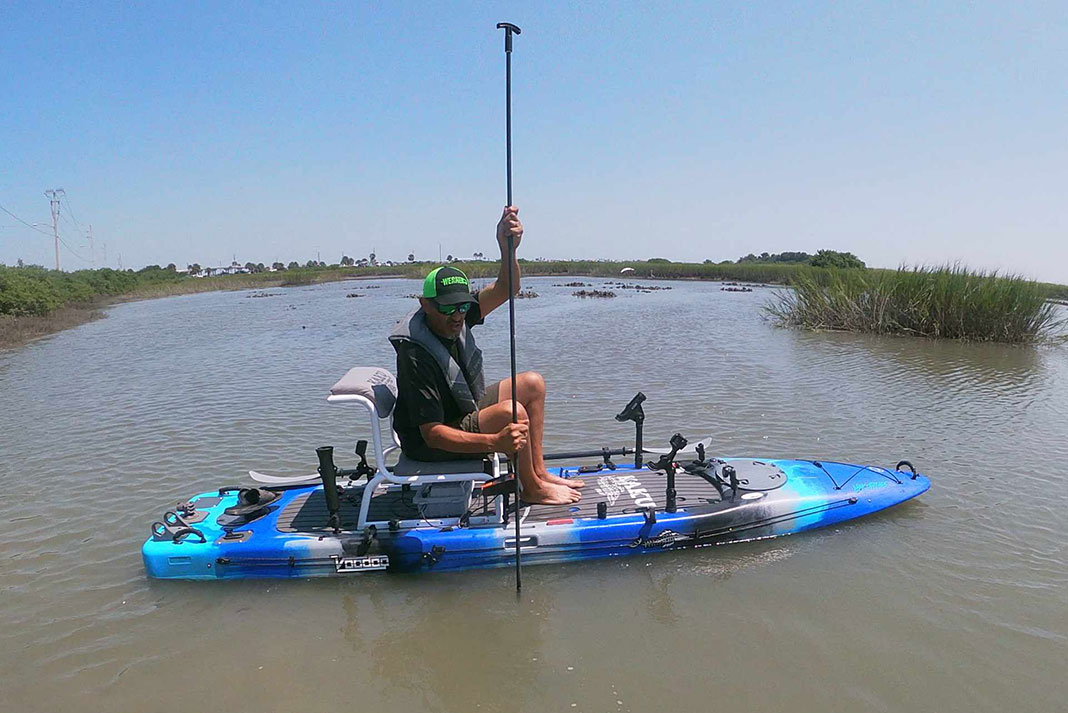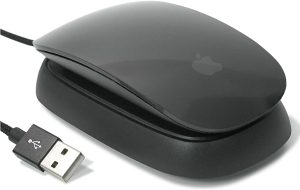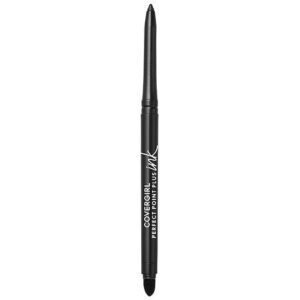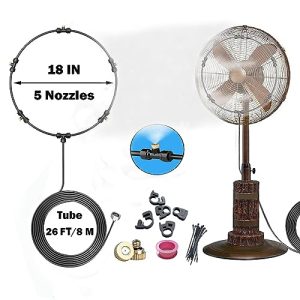Contents
- 1. What is a Kayak Stake Out Pole?
- 2. Types of Kayak Stake Out Poles
- 3. Choosing the Right Kayak Stake Out Pole
- 4. Setting Up a Kayak Stake Out Pole
- 5. Benefits of Using a Kayak Stake Out Pole
- 6. Tips and Techniques for Using a Kayak Stake Out Pole
- 7. Maintenance and Care for a Kayak Stake Out Pole
- 8. Safety Precautions When Using a Kayak Stake Out Pole
- 9. Frequently Asked Questions (FAQs)
- 10. Conclusion
If you’re a kayak enthusiast and want to take your fishing game to the next level, it’s time to familiarize yourself with the ultimate tool: the kayak stake out pole. Designed to anchor your kayak in shallow water, this guide will walk you through everything you need to know about using a stake out pole. Whether you’re a beginner or an experienced paddler, this article will provide you with invaluable tips and techniques to enhance your fishing experience and make the most out of your time on the water. So grab your paddle and let’s dive into the world of kayak stake out poles!
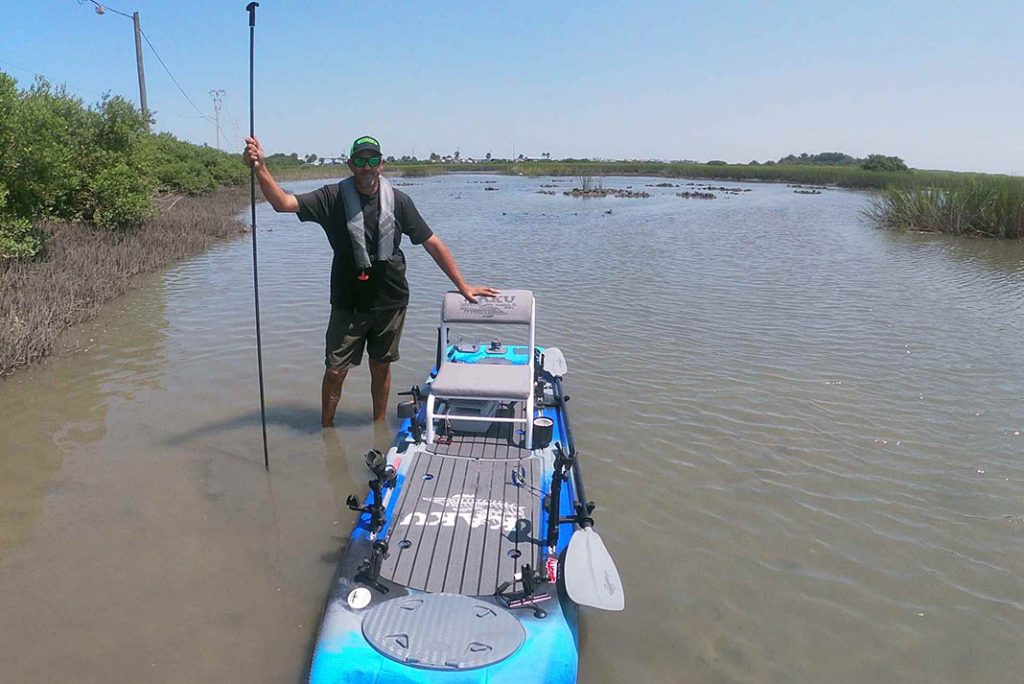
1. What is a Kayak Stake Out Pole?
A kayak stake out pole is a long, slender rod that is used to anchor a kayak in place while fishing or enjoying other water activities. It is usually made of lightweight but sturdy materials such as carbon fiber or aluminum, and it often has a pointed tip at one end for easy insertion into the ground or seabed. The other end typically features a handle or grip for comfortable and secure handling.
1.1 Definition
A kayak stake out pole is a versatile tool that allows kayakers to secure their kayaks in one spot, preventing them from drifting away or being carried by currents. It can be used in a variety of water conditions, including rivers, lakes, and even shallow coastal areas.
1.2 Purpose
The primary purpose of a kayak stake out pole is to provide stability and control to kayakers. By anchoring the kayak in one place, it allows anglers to fish without worrying about drifting. Additionally, it can be used to maintain a stationary position for various other activities such as photography, bird-watching, or simply enjoying the scenic views.
1.3 Features
Kayak stake out poles come in various lengths and materials, each offering its own set of features. Some poles are fixed in length, while others are adjustable to accommodate different water depths. Carbon fiber poles are known for their lightweight and rigid construction, while aluminum poles are durable and cost-effective options. The grip or handle of the pole is usually ergonomically designed to provide a comfortable and secure grip.
2. Types of Kayak Stake Out Poles
There are different types of kayak stake out poles available in the market, each designed to cater to specific needs and preferences of kayakers.
2.1 Fixed Length Poles
Fixed length poles are the most traditional type of stake out pole. They have a set length and do not offer adjustments. These poles are sturdy and reliable but may require different lengths for different water depths.
2.2 Adjustable Poles
Adjustable poles are designed to provide flexibility in various water conditions. They typically feature telescopic construction, allowing you to adjust the length of the pole to suit the depth of the water you are in. This versatility makes them a popular choice among kayakers.
2.3 Carbon Fiber Poles
Carbon fiber poles are known for their lightweight and durable construction. They offer excellent rigidity while remaining easy to handle. These poles are ideal for kayakers who prioritize weight reduction and maneuverability.
2.4 Aluminum Poles
Aluminum poles are a budget-friendly option that offers durability and strength. They are resistant to rust and corrosion, making them suitable for both freshwater and saltwater environments. These poles are a popular choice for beginners or kayakers on a tight budget.
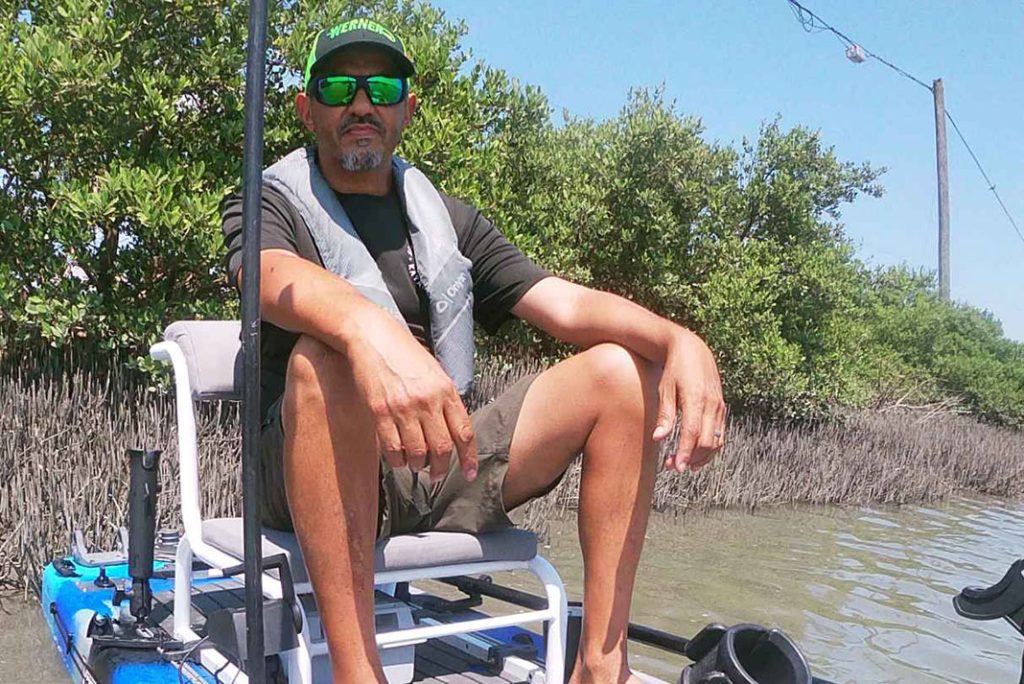
3. Choosing the Right Kayak Stake Out Pole
When selecting a kayak stake out pole, several factors should be considered to ensure it meets your specific needs and preferences.
3.1 Length
The length of the stake out pole is critical as it determines its ability to anchor your kayak in different water depths. Longer poles are suitable for deeper waters, while shorter poles are ideal for shallow areas. Consider the typical water depth where you intend to use the pole and choose a length that accommodates that.
3.2 Material
The material of the pole affects its weight, durability, and performance. Carbon fiber poles are lightweight and rigid, making them easy to handle and efficient in anchoring the kayak. Aluminum poles, on the other hand, are more affordable and offer durability, though they might be slightly heavier.
3.3 Weight
Consider the weight of the stake out pole, especially if you plan to carry it for extended periods or over long distances. Lightweight poles are easier to maneuver and carry, reducing fatigue during your kayaking adventures.
3.4 Durability
Ensure that the stake out pole is built to withstand the demands of your intended use. Look for features such as corrosion-resistant materials, reinforced joints, and sturdy construction to ensure it can withstand the rigors of extended use in various conditions.
3.5 Cost
Set a budget for your stake out pole purchase and find one that fits within your price range. While it’s essential to consider cost, remember that investing in a high-quality pole will provide better performance and longevity, saving you money in the long run.
4. Setting Up a Kayak Stake Out Pole
Once you have chosen the right kayak stake out pole for your needs, it’s time to learn how to set it up and make the most of its features. Here are some key steps for setting up your stake out pole:
4.1 Paddle Tethering
Before inserting the stake out pole into the ground or seabed, it’s crucial to secure your paddle. Use a paddle tether or leash to attach your paddle to the kayak. This ensures that your paddle remains within reach and prevents it from floating away while you’re anchored.
4.2 Anchoring Technique
To anchor the stake out pole, position the kayak over your desired spot and firmly grip the handle or grip of the pole. Use your body weight and upper body strength to drive the pointed end of the pole into the ground or seabed. Push down firmly and evenly until the pole is securely anchored.
4.3 Adjusting the Depth
If using an adjustable stake out pole, determine the desired depth according to the water conditions and adjust the length accordingly. Make sure the pole is inserted deep enough to provide stability but not so deep that it becomes challenging to retrieve.
4.4 Positioning for Best Results
To maximize the benefits of your stake out pole, position your kayak in a way that takes advantage of wind and current directions. By positioning the kayak accordingly, you can enjoy a more stable and comfortable experience while ensuring your desired fishing spot remains within reach.
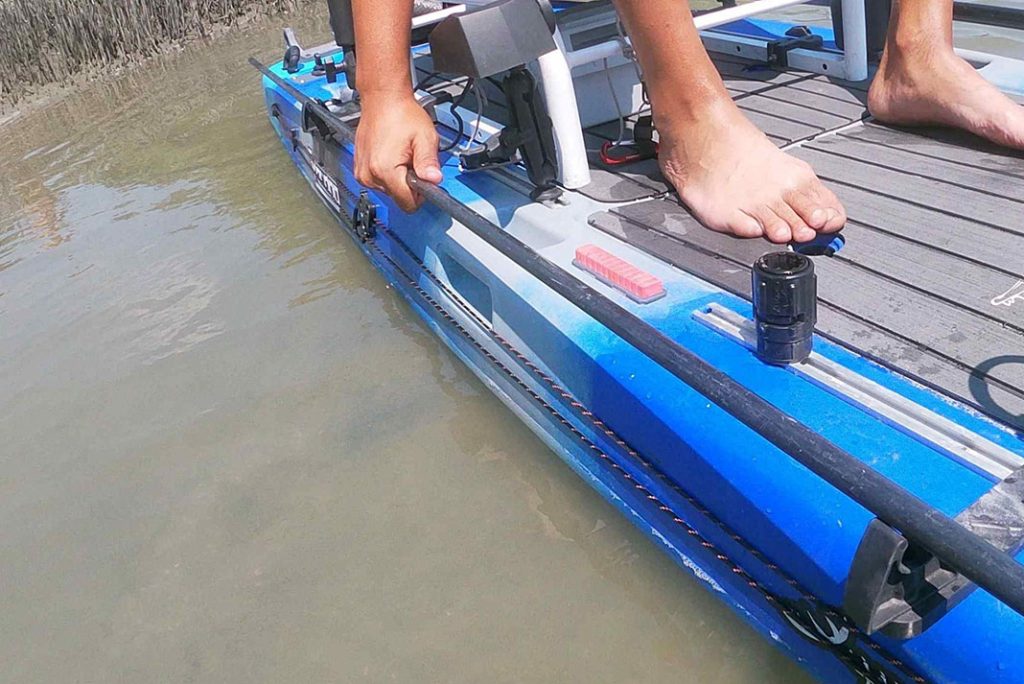
5. Benefits of Using a Kayak Stake Out Pole
Using a kayak stake out pole offers numerous benefits that enhance your kayaking and fishing experience. Here are some key advantages:
5.1 Silent and Stealthy Fishing
When fishing from a kayak, excessive movement or noisy equipment can scare away fish. By using a stake out pole, you can silently and stealthily position your kayak and remain in one spot, greatly increasing your chances of catching fish without disturbing them.
5.2 Avoiding Drifting
One of the most significant benefits of a stake out pole is its ability to prevent your kayak from drifting. This is especially useful if you are fishing in areas with currents or windy conditions. By anchoring your kayak, you can focus on fishing or other activities without constantly readjusting or battling against drifting.
5.3 Improved Casting Accuracy
By remaining stationary thanks to a stake out pole, you can concentrate on casting your line with greater accuracy. Without the worry of drifting or being carried by currents, you can focus on your fishing technique and increase your chances of hitting your desired target.
5.4 Hands-free Operation
With a securely anchored kayak, you can enjoy truly hands-free operation. Whether you want to take a break, enjoy a snack, or change your fishing gear, you can do so without worrying about keeping your kayak in place. Simply let the stake out pole do its job while you relax and tend to other tasks.
5.5 Reducing Paddle Fatigue
Paddling for extended periods can lead to arm and shoulder fatigue. By using a stake out pole, you can reduce the need for constant paddling and give your muscles a break. This not only reduces fatigue but also allows you to conserve energy for longer kayaking trips or more vigorous fishing sessions.
6. Tips and Techniques for Using a Kayak Stake Out Pole
To make the most of your kayak stake out pole, consider the following tips and techniques:
6.1 Watch for Obstacles
Before driving the stake out pole into the ground or seabed, take a moment to survey the area for any potential obstacles. Rocks, submerged tree branches, or other debris could damage the pole or impede its insertion. Avoid potential hazards to ensure a smooth and successful anchoring process.
6.2 Avoid Strong Currents
While a stake out pole can help keep your kayak stationary in mild to moderate currents, it may not be suitable for use in strong or fast-flowing currents. Avoid using the pole in challenging conditions where it may not be able to provide the necessary stability.
6.3 Securely Anchoring the Pole
To ensure the pole remains securely anchored, push it into the ground or seabed firmly and evenly. Use your body weight and upper body strength to create a stable anchor point. Avoid abrupt or jerky movements that could dislodge the pole from its position.
6.4 Using Multiple Poles
In some cases, using multiple stake out poles can provide even greater stability and control. By strategically positioning multiple poles around your kayak, you can fine-tune your anchor points and distribute the load effectively. Experiment with different configurations to find the setup that works best for your specific needs.
6.5 Staying Balanced
While the stake out pole helps to keep your kayak stationary, it’s essential to maintain proper balance and weight distribution within the kayak. Shift your body weight as needed to maintain stability and prevent tipping. Practice balancing techniques and adjust your position as necessary to ensure a safe and comfortable experience.
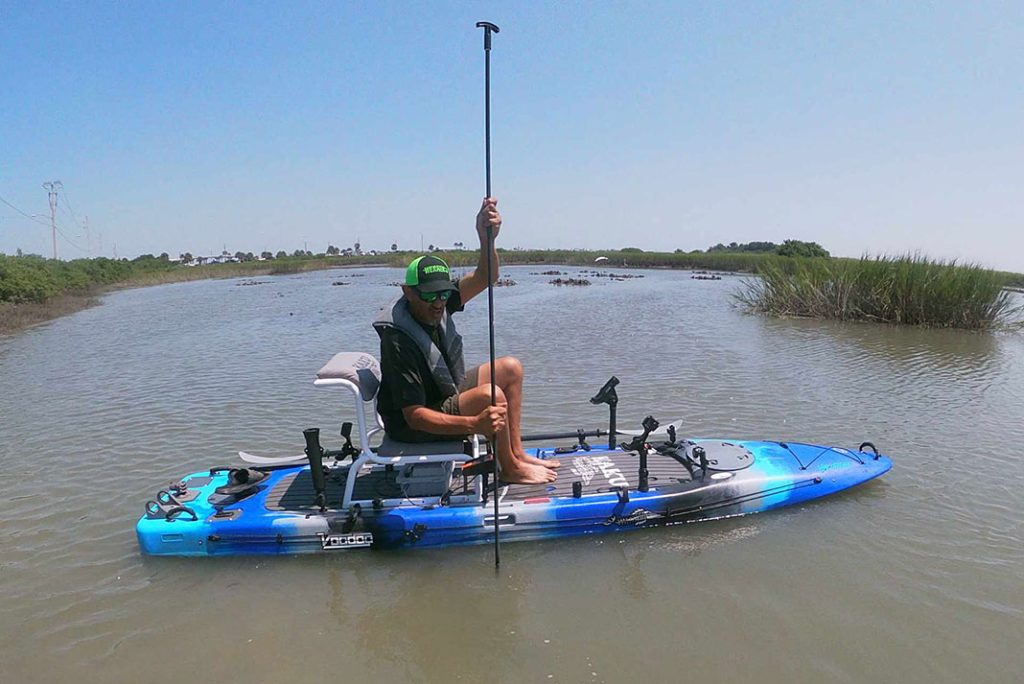
7. Maintenance and Care for a Kayak Stake Out Pole
To ensure the longevity and optimal performance of your stake out pole, regular maintenance and care are essential. Here are some maintenance tips to keep in mind:
7.1 Cleaning
After each use, rinse off any dirt, sand, or saltwater from the stake out pole using fresh water. This helps prevent corrosion and ensures the pole remains in good condition. Use a soft cloth or sponge to wipe down the pole, paying attention to any joints or moving parts.
7.2 Storage
When not in use, store the stake out pole in a clean, dry area, away from direct sunlight or extreme temperatures. Avoid tightening any adjustable parts excessively to prevent unnecessary strain on the pole. Consider investing in a storage bag or sleeve specifically designed for stake out poles to offer additional protection.
7.3 Inspecting for Damage
Regularly inspect the stake out pole for any signs of damage, such as cracks, dents, or loose parts. Pay close attention to points of stress, such as joints or ferrules. If you notice any significant damage or structural issues, it may be necessary to repair or replace the pole before further use.
7.4 Replacing Parts
Over time, certain parts of the stake out pole may experience wear and tear. This can include the grip, ferrules, or any attachments. Check with the manufacturer to see if replacement parts are available. It’s important to use genuine replacement parts to ensure proper fit and compatibility.
8. Safety Precautions When Using a Kayak Stake Out Pole
While using a kayak stake out pole enhances your kayaking experience, it’s essential to prioritize safety. Here are some safety precautions to keep in mind:
8.1 Life Jacket Usage
Always wear a properly fitted and Coast Guard-approved life jacket or personal flotation device (PFD) when kayaking. A life jacket provides buoyancy and can potentially save your life in case of an accident or unexpected circumstances.
8.2 Avoiding Overextension
Be mindful of your body’s limits and avoid overextending yourself when using a stake out pole. Improper positioning or excessive force when anchoring the pole can lead to strain or injury. Use proper technique and listen to your body to prevent unnecessary strain.
8.3 Awareness of Surroundings
Maintain awareness of your surroundings while using a stake out pole. Keep an eye on other watercraft, potential obstacles, or changing weather conditions. Being aware of your surroundings helps prevent accidents and allows for quick response to any unforeseen circumstances.
8.4 Weather Conditions
Before heading out on your kayaking adventure, check weather conditions and forecasts. Avoid kayaking in inclement weather or during storms, as it can significantly impact your safety and the effectiveness of your stake out pole. Always prioritize your well-being and adjust your plans accordingly.
8.5 Communicating with Others
If kayaking with others, establish clear communication methods and signals. Whether it’s using hand signals or radios, ensure that everyone in your group is on the same page. This helps to coordinate movements, alert others of emergencies, and enhance overall safety.
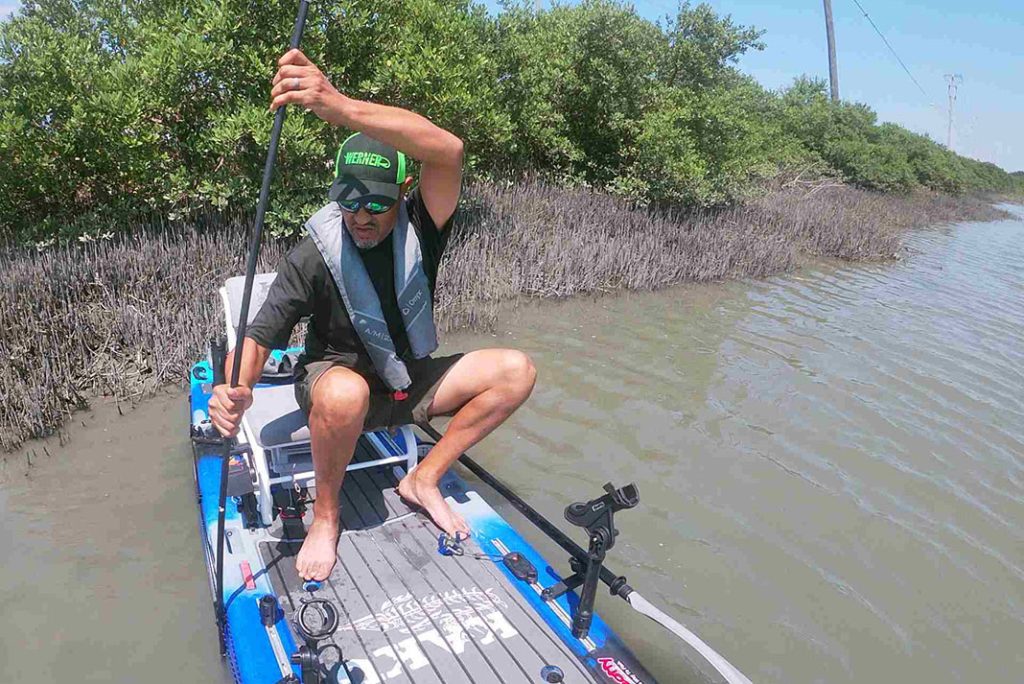
9. Frequently Asked Questions (FAQs)
Here are some commonly asked questions about kayak stake out poles:
9.1 Can a kayak stake out pole be used in all types of water?
Yes, a kayak stake out pole can be used in various types of water, including rivers, lakes, and shallow coastal areas. However, it’s essential to consider the conditions and limitations of your specific stake out pole and exercise caution in challenging environments.
9.2 How deep should I anchor the pole?
The ideal depth for anchoring the stake out pole depends on the water conditions and personal preference. Generally, anchoring the pole deep enough to provide stability but shallow enough for easy retrieval is recommended. Experiment with different depths to find what works best for you.
9.3 Are kayak stake out poles only for fishing?
While kayak stake out poles are commonly used in fishing, they can also be useful for various other activities such as wildlife photography, bird-watching, or simply enjoying the scenery. The versatility of stake out poles allows for a wide range of applications beyond fishing.
9.4 Can I use a kayak stake out pole for stability?
While a stake out pole provides some degree of stability, it’s not designed primarily for that purpose. If stability is a significant concern, consider other accessories such as stabilizing outriggers or pontoons designed specifically for enhancing kayak stability.
9.5 Can a kayak stake out pole damage my kayak?
When used correctly and with appropriate care, kayak stake out poles should not cause any damage to your kayak. However, it’s crucial to avoid excessive force or improper technique when anchoring the pole. Regularly inspect both the stake out pole and kayak for any signs of wear or damage to address potential issues promptly.
10. Conclusion
A kayak stake out pole is a valuable tool for kayakers, offering stability, control, and flexibility in various water conditions. By understanding the different types of poles available, how to choose the right one for your needs, and the benefits it offers, you can make the most of this essential accessory for your kayaking adventures. Remember to follow safety precautions, regularly maintain your stake out pole, and enjoy the countless benefits it provides, whether you’re fishing, taking photographs, or simply enjoying the serenity of the water.

